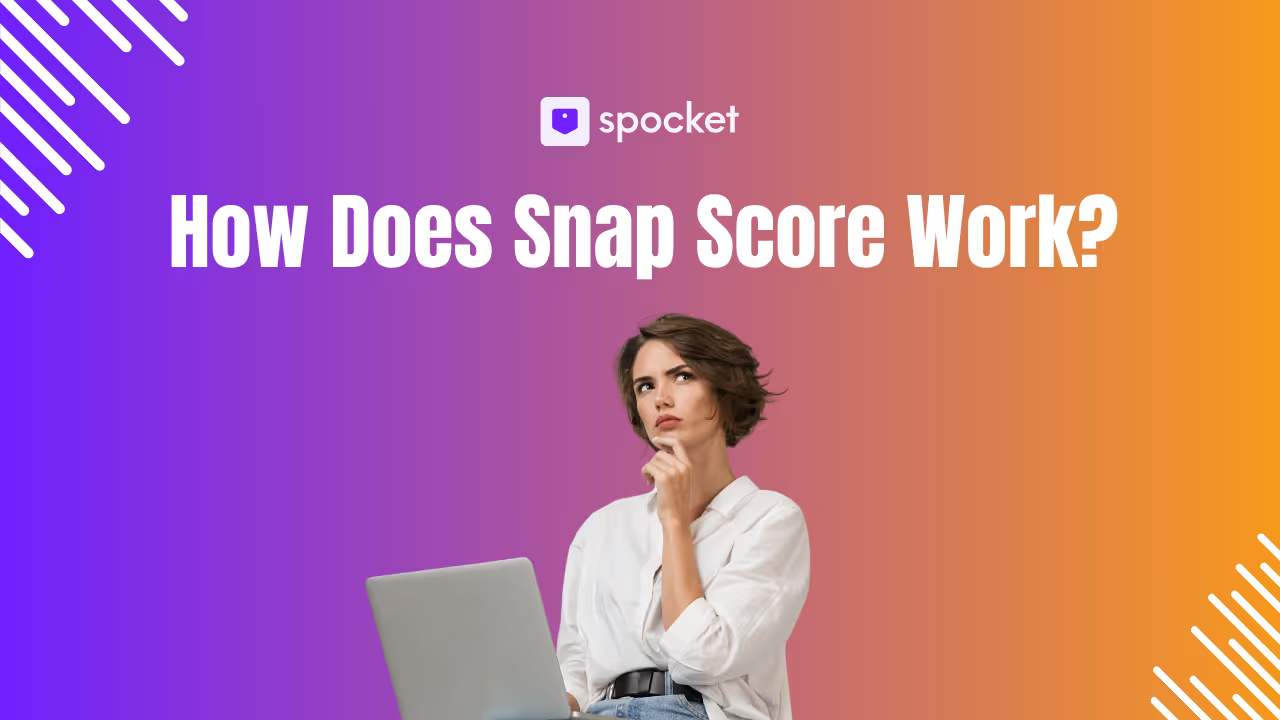If you’re a creator looking for more flexibility and control over how you earn money online, you’ve probably considered alternatives to Patreon. While Patreon has been the go-to for many content creators, its high fees and limited customization options have prompted a lot of creators to explore other platforms. Whether you’re an artist, podcaster, or YouTuber, finding the right platform that suits your style and business needs is key.
In this article, we’re going beyond just listing alternatives. We’ll explore the best platforms for creators in 2026, diving into what makes each one unique. Plus, we’ll help you figure out which option is the best fit for your content type, audience, and goals. Ready to take control of your monetization? Let’s dive in!
Why Are Creators Moving Away from Patreon?
Patreon has long been a popular platform for creators, but it’s no secret that many are now looking for alternatives. The reasons are clear—high fees, limited customization, and the strict content policies have left many feeling frustrated and searching for something better. As creators continue to look for platforms that provide more control, flexibility, and better financial rewards, the appeal of alternatives grows.
The good news is that creators don’t have to feel stuck. There are now platforms that offer lower fees, better payouts, and more control over content. But to fully understand why so many are making the switch, let’s take a closer look at the challenges that come with using Patreon.
The Pain Points Creators Face with Patreon
Many creators have voiced their dissatisfaction with Patreon’s fee structure. While Patreon does offer a great way to monetize content, they take a 12% cut of your earnings, which can feel like a big chunk, especially when you’re starting out. On top of that, there are transaction fees for every donation, and when you add it all up, you’re left with less than you expected.
Another issue many creators face is the lack of content control. Patreon’s policies have sometimes been criticized for censorship or removing content that doesn’t align with their guidelines. For creators who want to keep their content freedom intact, this can be a dealbreaker. As a result, creators are exploring platforms where they can maintain creative control, avoid hefty fees, and build more direct relationships with their fans.
Criteria for Choosing the Right Patreon Alternative for Your Niche
When searching for a Patreon alternative, the decision isn’t just about picking a platform—it’s about choosing one that fits your unique needs as a creator. The platform you choose should align with your content, your goals, and the type of audience you want to engage. Let’s break down the key factors to consider when picking the best alternative for your creative business.
Choosing wisely will ensure you have more control, better revenue potential, and a smoother experience with both managing your content and engaging your supporters. Here’s how you can evaluate the best platforms based on your specific needs.
1. Fee Structure and Revenue Share Models
One of the first things to check is the fee structure. Different platforms offer different pricing models. Some, like Ko-fi and Buy Me A Coffee, are fee-free for basic use, which means more of your hard-earned money stays in your pocket. Others, like Podia or Ghost, may charge a monthly subscription but offer unlimited features, making them a great choice for creators who need more robust tools.
Make sure the platform you choose provides a clear and transparent fee structure. Look out for hidden costs like transaction fees, membership fees, and additional charges for extra features. The less you pay to the platform, the more you can invest in your growth and content.
2. Content Flexibility and Types
Next up is the type of content you create. Not all platforms support the same types of content or offer the same flexibility. For example, Podia is a great choice if you want to sell online courses and digital downloads. If you’re focused on membership-based content like newsletters or videos, Substack or Ghost are top contenders.
Make sure to choose a platform that allows you to upload and distribute your content without restrictions. Look for platforms that offer customizable features for video, audio, digital products, and anything else you want to offer to your audience.
3. Payout Speed and Frequency
The payout speed can vary significantly across platforms. If you’re relying on your earnings to cover expenses or pay bills, you’ll want a platform that provides quick payouts. Some platforms like Ko-fi offer instant payouts after donations, while others might take days or weeks to process payments.
Consider the payment frequency too—whether you’re getting paid monthly, weekly, or as you earn. For many creators, a faster payout can be crucial for cash flow and ensuring smooth operations.
4. Tools for Community Engagement
Building a loyal fanbase is key to success. Look for platforms that provide community engagement tools like private chats, exclusive posts, and interactive features that help you connect with your supporters.
Platforms like Ghost offer comment sections, member-exclusive content, and even live streams, which can help foster deeper relationships with your audience. The more you can engage with your community, the more likely they are to continue supporting you.
5. Ease of Use and Setup
You want a platform that’s easy to navigate and doesn’t require a tech expert to get started. Some platforms, like Buy Me A Coffee, allow you to set up your page in just minutes. Others, like Ghost or Podia, may require more technical setup, especially if you’re building a custom site.
Don’t let a complex setup process stand in your way—find a platform that allows you to focus on creating and engaging with your community rather than wrestling with technicalities.
Top 10 Patreon Alternatives for 2026
Now that we’ve covered the key factors to consider, let’s dive into the top 10 Patreon alternatives for 2026. These platforms are offering something unique, whether it’s lower fees, better community engagement, or more control over your content. Each platform caters to different needs, so let’s explore which one might be the best fit for your creative business.
1. Ko-fi: The Donor-Centric Patreon Alternative
Ko-fi is a platform designed for creators who prefer donations over subscriptions. It’s all about simplicity—providing a space where fans can contribute without the commitment of a monthly membership. Whether you're an artist looking for one-time donations or a writer who wants to sell a digital product, Ko-fi allows you to receive support from your audience with minimal hassle.
Fees & Pricing
Ko-fi is fee-free for basic use, meaning that creators keep 100% of their donations. If you're looking for additional features, such as the ability to create memberships and more extensive customization, Ko-fi Gold is available for just $6 per month.
Pros & Cons
- Pros: No transaction fees, flexible donations, easy setup for creators.
- Cons: Limited tools for community engagement and advanced content management.
Best Suited For
Ko-fi is perfect for artists, writers, and creators who want a simple platform for accepting donations or selling small products.
User Experience
Ko-fi has a clean, user-friendly interface, and creators can set up their page quickly without any technical know-how. The platform is designed to be straightforward, allowing you to focus on your content and community, not the tech side of things.
2. Buy Me A Coffee: Simplicity Meets Flexibility
Buy Me A Coffee offers a similar model to Ko-fi but focuses more on creating an easy way for creators to interact with their fans and receive direct support. It allows you to offer exclusive content to your community or run paid memberships without the need for a long-term subscription commitment.
Fees & Pricing
The basic model is free, allowing creators to receive donations with no fees. However, Buy Me A Coffee Pro comes at $5 per month, offering features like membership tiers, premium content, and custom branding.
Pros & Cons
- Pros: No fees for donations, simple setup, great for small, supportive communities.
- Cons: Limited advanced community-building features, less customization than other platforms.
Best Suited For
Buy Me A Coffee is great for smaller creators, freelancers, or anyone who wants an easy, direct way to interact with their audience and monetize through donations.
User Experience
The platform is known for its quick setup and seamless user experience. It’s incredibly easy to start collecting support right away, and the interface is intuitive for both creators and supporters.
3. Ghost: A Premium Content Management Solution
Ghost is a robust, open-source platform tailored to creators who want full control over their content. It offers a more sophisticated content management system than platforms like Ko-fi or Buy Me A Coffee. Ghost allows you to run a membership-based site with full customization options. It’s perfect for writers, journalists, and publishers who want a professional and clean design for their content.
Fees & Pricing
Ghost operates on a subscription-based model, with prices starting at $9 per month for basic features. More advanced plans, offering enhanced customization and integration, start at $39 per month. Ghost doesn’t take a cut of your earnings, so you keep 100% of your revenue.
Pros & Cons
- Pros: Full control over your site, no platform fees, highly customizable.
- Cons: Requires more technical knowledge to set up and maintain, especially for advanced features.
Best Suited For
Ghost is ideal for writers, bloggers, and publishers who need a powerful content management system and want more control over their site’s functionality.
User Experience
While the platform can be a bit more challenging to set up, Ghost’s dashboard is highly customizable, allowing you to tailor the experience to your needs. If you’re comfortable with a bit of technical work, you can easily set up a sleek, professional-looking site.
4. Podia: All-in-One Creator Platform
Podia is an all-in-one platform that allows creators to sell courses, digital products, and memberships. It’s designed to be a comprehensive solution for creators who want to manage both their content and revenue in one place. Whether you’re a coach, educator, or entrepreneur, Podia provides all the tools you need to run a successful business.
Fees & Pricing
Podia is priced starting at $39 per month for the basic plan. It offers no transaction fees, making it a great choice for creators who need a versatile platform that can manage digital products, memberships, and online courses.
Pros & Cons
- Pros: Includes everything from email marketing to course hosting. No transaction fees.
- Cons: May be overkill for creators who just need basic membership or donation-based options.
Best Suited For
Podia is perfect for course creators, coaches, and digital product sellers who need a versatile platform for both content creation and community building.
User Experience
The platform is user-friendly and offers easy-to-use tools for building and selling your content. It’s a great all-in-one option if you want to create and sell content seamlessly.
5. Substack: The Newsletter-Centric Monetization Tool
Substack has become a go-to platform for writers and journalists who want to monetize their newsletters. It focuses on providing a straightforward way to build an email list, offer subscription-based content, and connect with an engaged audience.
Fees & Pricing
Substack offers a free plan but takes a 10% cut of subscription revenue. This is still lower than Patreon’s fees, making it an attractive option for creators just starting to build their audience.
Pros & Cons
- Pros: Simple to use, great for building a paid newsletter.
- Cons: Limited customization and features outside of email newsletters.
Best Suited For
Substack is ideal for writers, journalists, and thought leaders who want to offer paid newsletters and create a community around their writing.
User Experience
Substack’s interface is minimalist and easy to navigate. The email-driven design allows creators to focus solely on their writing and building their subscriber base.
6. Memberful: Membership Platform for Established Creators
Memberful provides a membership platform that can integrate directly into your existing website. It’s designed for creators who have a loyal following and want to offer premium content or exclusive memberships.
Fees & Pricing
Memberful offers a free plan but charges $25/month for premium features. It takes a membership fee of around 10%, depending on your pricing tier.
Pros & Cons
- Pros: Seamless integration with WordPress, robust membership options, customizable.
- Cons: Monthly fees and transaction costs.
Best Suited For
Memberful is best for creators who already have a website and a strong audience and want a customized membership solution without using a third-party platform.
User Experience
The platform integrates smoothly with your website, and the dashboard is user-friendly for creators who need advanced membership management tools.
7. Teachable: Ideal for Course Creators
Teachable is one of the most popular platforms for course creators. If you want to monetize your expertise by creating and selling online courses, Teachable provides all the tools you need to set up and manage your course content.
Fees & Pricing
Teachable offers a free plan, but charges $39/month for the basic paid plan, which includes more features and no transaction fees.
Pros & Cons
- Pros: Extensive course creation tools, zero transaction fees on paid plans.
- Cons: Limited community-building tools.
Best Suited For
Teachable is ideal for educators and coaches who want to create and sell online courses with minimal effort.
User Experience
Teachable’s course-building tools are intuitive, making it easy to upload and organize your content. However, there’s a bit of a learning curve if you want to create more advanced courses.
8. Thinkific: Another Great Choice for Course Creators
Thinkific is similar to Teachable in that it’s designed specifically for course creators who want to build a business around online learning.
Fees & Pricing
Thinkific offers a free plan with basic features, and premium plans start at $49/month.
Pros & Cons
- Pros: Strong course-building features, no transaction fees.
- Cons: Higher cost for premium features.
Best Suited For
If you’re focused on teaching courses and want an easy-to-use platform that integrates with other tools, Thinkific is a top choice.
User Experience
Thinkific offers a clean, intuitive design with powerful tools for creating structured courses. It’s a great choice for creators who want to create educational content at scale.
9. Liberapay: Fee-Free Platform for Nonprofits
Liberapay is unique in that it’s built specifically for nonprofit creators or those working on open-source projects. It’s a donation-based platform that operates without any fees, making it an attractive alternative for creators who want to accept donations without losing money to platform cuts.
Fees & Pricing
Liberapay is completely fee-free, which means creators get to keep all of their earnings.
Pros & Cons
- Pros: Fee-free, great for nonprofit or open-source projects.
- Cons: Limited features for content creators beyond donations.
Best Suited For
If you’re involved in a nonprofit initiative or open-source development, Liberapay is the platform for you.
User Experience
Liberapay offers a simple interface, but it’s less robust than some other platforms. It’s perfect for nonprofit creators looking for a minimalist solution.
10. Fanfix: Gen Z-Focused Creator Platform
Fanfix is a newer platform designed specifically for Gen Z creators who want to engage with their audience and create exclusive content. It’s a great option for creators in the lifestyle or beauty niches.
Fees & Pricing
Fanfix takes no fees on donations but charges a 10% fee on monthly memberships, which is lower than Patreon.
Pros & Cons
- Pros: Low fees, specifically built for Gen Z influencers, great content control.
- Cons: Smaller user base compared to larger platforms like Ko-fi or Patreon.
Best Suited For
Influencers in beauty, fashion, or lifestyle niches who want a platform designed for younger audiences.
User Experience
Fanfix offers a simple, mobile-friendly design that resonates with younger creators and their fans. It’s easy to set up and start monetizing content.
Side-by-Side Comparison of the Best Patreon Alternatives
Now, let's break down the key features of each platform in an easy-to-scan comparison table. This will help you quickly see which platform offers what you need!
Conclusion: Choosing the Right Patreon Alternative for Your Growth
Choosing the best Patreon alternative comes down to finding a platform that aligns with your specific needs as a creator. Whether you’re an artist, educator, or influencer, different platforms offer unique features that cater to different niches. It’s not just about low fees—it’s about the right tools for monetizing your content, engaging your audience, and scaling your business.
With so many options available, you no longer have to feel tied to Patreon’s limitations. Explore the platforms that resonate with your goals and experiment to find the one that works best for you. The right platform will help you grow, build stronger connections with your supporters, and ensure a more sustainable and rewarding creative journey.






































